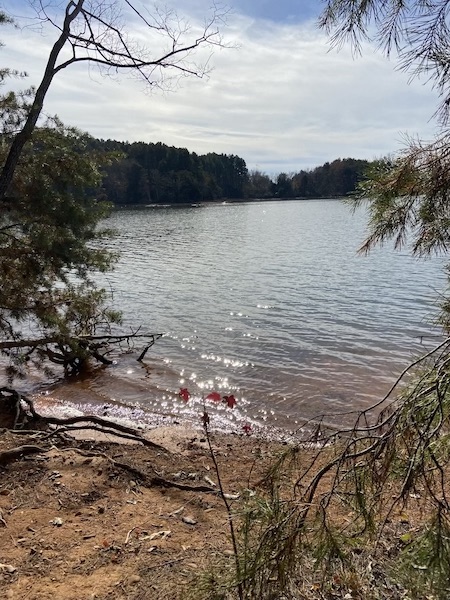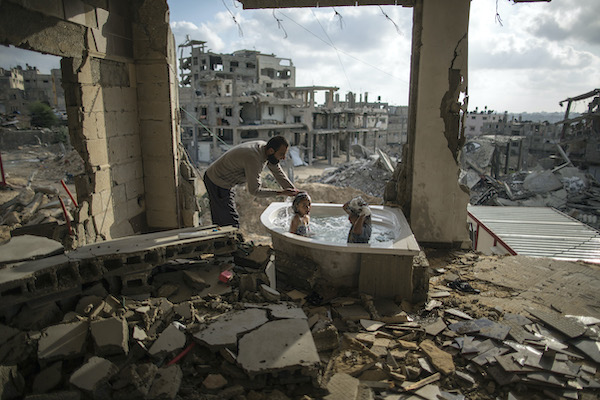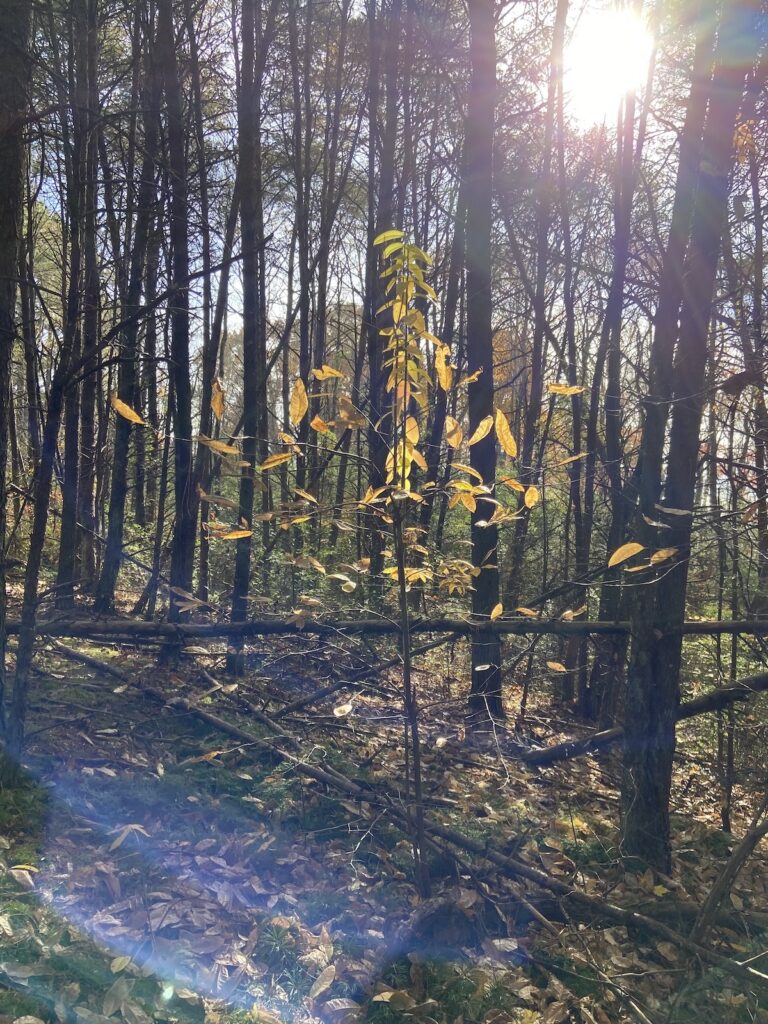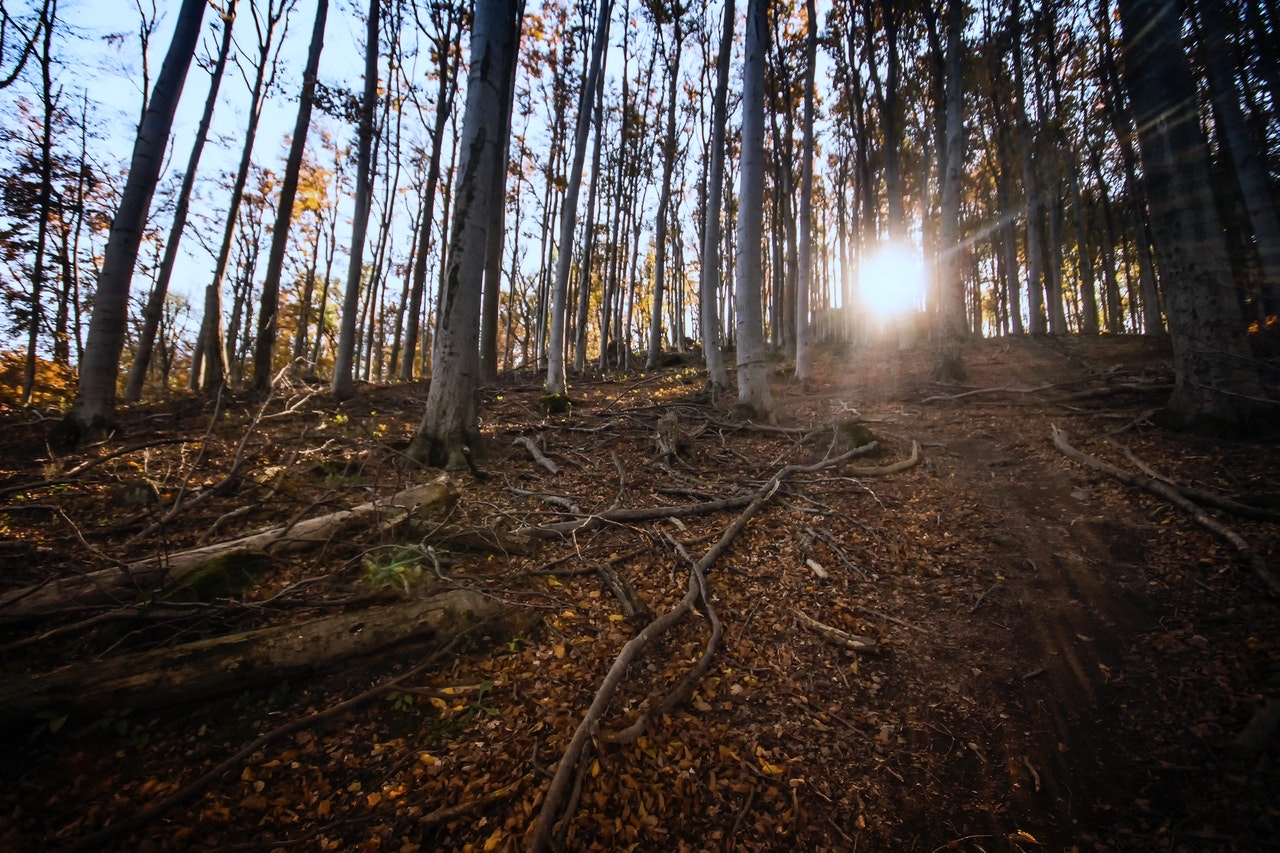This past Sunday was the first Sunday of Advent. For the past fifteen years, it’s been a busy yet fulfilling day brimming with activity, meaning, and purpose: Seeing the sanctuary decorated with candles and liturgical color. Smelling the greenery (including the must from garlands and wreaths long stored away in church attics or sheds). Hearing the first familiar notes of seasonal hymns and, of course, the famous lectionary words from the Gospel exhorting us to keep awake, to keep watch. All the work always seemed worth it. The intentionality of it all made the season special beyond the pleasing aesthetics of the once-a-year decorations. But not this year. It’s still the first Sunday of Advent, the beginning of the liturgical year, the start of a poignant and holy season; but Kristen and I haven’t had a hand in anything that’s taking place in any sanctuary. Instead, on that first Sunday of Advent, we set out to explore a hiking trail near my in-laws’ house.

This has been our new Sunday ritual, time alone together in nature, as we seek and wait for what comes next. It’s been good for us. Fall in the Great Smoky Mountains has been glorious. It’s also been somber. Especially so today.
The trail undulated through the forest beside Tellico Lake. In turns there were decaying leaves, fallen pine needles, and damp earth underfoot as we made our way along the narrow path. The canopy above us was no longer glorious. Most of the remaining leaves were brown and brittle and barely clinging to their branches. For much of the hike, our footsteps and our voices were the only sounds we heard. We talked as we walked, grieving our disconnection from what we have known, musing about what may or may not lie ahead; giving thanks that we have had a place to land; commiserating over the new challenges we face by not having a space of our own while trying to navigate a cultural environment where we feel like foreigners in our homeland.
Eventually we found our way to a place where the trail overlooks the edge of the lake. There was a rock on the sliver of shoreline below, repeatedly washed over by the rolling tide. Not battered, but nonetheless hit again and again. I felt a sense of kinship with it, as we looked out on the water and continued our conversation. Kristen observed that not having a proper Advent wreath with the appropriately colored candles is, in a way, rather Advent-y.
I smiled because (as usual) she was right. This disconnect makes us dwell on the meaning of the season in a different way, look for the light elsewhere: around us, within us. It takes Advent out of our hands – and part of the point of Advent is to recognize that what we anticipate unfolding in Bethlehem isn’t in our hands to begin with. Waiting, even expectant waiting, naturally produces anxiety because, when we are forced to wait, it means the object of our dread or desire is beyond our control. We cannot change or do anything. We can only choose how we respond.
“Waiting, even expectant waiting, produces measures of anxiety by its very nature because, when we are forced to wait, it means the object of our dread or desire is beyond our control.”
My mind then turned to a memory that could not have been more different from our silvan surroundings. I recalled a photograph taken by photojournalist Wissam Nassar in Gaza during the Israeli-Hamas missile strikes of 2018. Rubble from bombed out buildings fills the image, framed by a few broken and shrapnel-riddled walls somehow still standing. The city looks deserted except for a trio of figures in the middle ground: a father helping his two small children take a bath in what appears to be a hot tub. A moment of beauty in the midst of horror, the photo is oddly serene and mundanely defiant.

I do not know of another picture that captures hope more dramatically. Nothing will change for these children or their father once the bath is over. Nothing will change because they took the time (and the risk) to wash the dust and grit from the surrounding cataclysm out of their hair. Their home and their city will still be in ruins. They will not and cannot change any of that; but they can, perhaps, prevent all of that from fundamentally changing them. By choosing to take this bath, they are refusing to allow the destruction and despair to define them or defeat them. They’ve decided to still be a family and do the things families do. That’s why this image stays with me. In a simple yet profound way, they are keeping awake, refusing to submit to the slumber of night.
This, of course, is the metaphorical language of the gospel and where Advent always begins. The lectionary readings for Advent 1 always looks forward, not to the manger, but beyond to what the coming of Jesus will ultimately bring about. A new creation. A new city. A new Jerusalem where God and God’s people will dwell together without tears, without pain, without night, without even need of sunshine because the light that shines in the darkness, the light we anticipate in Jesus, will never set, and will provide all the illumination God’s people will ever need.
In between there will be upheaval and an upending of all that is familiar. But death and destruction will not have the last word. They will not because they cannot, no matter how bad or how dark things become. In the order of God’s creation, there is evening then there is morning. Day always follows night, not the other way around.
“We do not and cannot deny the darkness; but we can and should defy it and its influence…Always being on the lookout for glimmers of light…In this way, waiting is acting and hoping is holy resistance.”

Therein lies our hope – in the anticipation of that coming dawn, in trusting that it will come, and being willing to wait. We do not and cannot deny the darkness; but we can and should defy it and its influence. Keeping awake. Not giving in. Always being on the lookout for glimmers of light as we survey the landscape and find our way one day, one hour at a time. In this way, waiting is acting and hoping is holy resistance.
As we turned back toward the trailhead, I felt a new appreciation for the un-scenic autumn around us and beneath us. It was grounding. The forest was in liminal space too, beyond the peak of one season but not yet in the embrace of the next. And yet there was light and resilient color. And so there is, and so there will be. Even as seasons – and our experience of seasons – change.



































